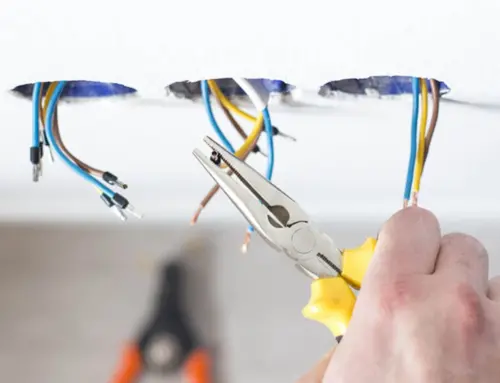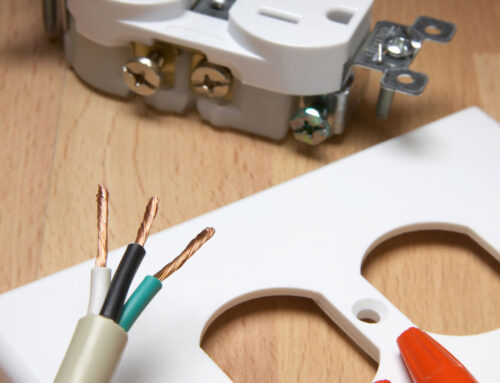It’s happening all around us—our everyday electrical appliances are getting smarter. They’re no longer just doing what we tell them to. From refrigerators that track your grocery habits to washing machines that adjust settings based on your usage, appliances are quietly adapting to our routines.
This “silent revolution” in technology is transforming how we interact with our homes and daily tasks. These appliances are learning from our habits and adjusting accordingly, making life a little easier, more efficient, and sometimes even more fun.
Whether it’s optimizing energy use or anticipating our needs before we ask, the way we use technology is evolving. So, the next time your dishwasher knows exactly when to run or your thermostat adjusts the temperature without you lifting a finger, you’ll know that the future is already here—and it’s more intuitive than we ever imagined.
How Are Electrical Appliances Changing to Match Human Behavior Patterns?
Electrical appliances have traditionally operated on fixed schedules or manual commands. However, the modern shift is towards adaptability—machines responding not just to buttons but to patterns, preferences, and contexts.
- Personalized Operation: Appliances now adjust settings like temperature, speed, or cycle based on past usage rather than generic modes.
- Predictive Functionality: For example, smart thermostats anticipate when you’ll arrive home and adjust heating or cooling proactively.
- Context Awareness: Appliances sense environmental or situational factors, such as time of day, weather, or occupancy, to tailor their behavior.
- Seamless Integration: Devices communicate within ecosystems—your alarm clock might trigger your coffee maker, or your lights might dim automatically during TV time.
- Voice and Gesture Control: Beyond buttons, appliances recognize commands delivered in natural ways, fitting into human communication patterns.
- Energy Management: Machines adapt operation times to off-peak electricity hours or renewable energy availability, minimizing cost and environmental impact.
These changes represent a fundamental shift from reactive to proactive appliance behavior, tuned to fit how people live.
What Technologies Enable Appliances to Adapt to User Habits?
This transformation is powered by a suite of cutting-edge technologies that collect, analyze, and act upon behavioral data.
- Sensors and IoT Connectivity: Embedded sensors track usage, environmental conditions, and even biometric data, transmitting information via the Internet of Things (IoT) to cloud platforms.
- Machine Learning Algorithms: These algorithms identify patterns from collected data, learning preferences and predicting future behaviors to optimize appliance functions.
- Artificial Intelligence (AI): AI enhances decision-making capabilities, enabling appliances to understand context, prioritize tasks, and personalize responses.
- Big Data Analytics: Aggregating usage data across users allows manufacturers to refine performance, anticipate common needs, and customize updates.
- Cloud Computing: Remote data processing allows for complex analysis and seamless updates, ensuring appliances stay current with evolving user habits.
- Natural Language Processing (NLP): Enables voice assistants integrated with appliances to understand and respond to human speech naturally.
- Edge Computing: Some decision-making is performed locally on the device to reduce latency and improve responsiveness.
Together, these technologies create a robust infrastructure that empowers appliances to evolve from passive tools into interactive partners.
In What Ways Do Smart Appliances Learn From Daily Routines?
The “learning” aspect of smart appliances is both fascinating and practical. Here’s how they transform raw data into intelligent behavior.
- Usage Pattern Recognition: Appliances track when and how often they’re used, what settings are preferred, and how users respond to notifications or alerts.
- Adaptation Over Time: Based on feedback loops, appliances adjust their operation, such as shortening cycles when they detect lighter loads or increasing brightness of lights in the evening.
- User Profiling: Some devices differentiate between users, adjusting preferences for each individual, ideal for shared household appliances.
- Environmental Interaction: Appliances monitor temperature, humidity, or light levels and alter their function—for example, an air purifier might increase airflow during cooking times.
- Learning from Anomalies: When users override defaults or manually adjust settings, the appliance records this as data to refine future behavior.
- Routine Mapping: Devices map out daily or weekly schedules, preemptively preparing the home for activities like workouts, meal prep, or sleep.
- Collaborative Learning: Appliances connected in a network share insights, such as a smart oven syncing with a smart fridge to optimize meal preparation.
This continuous learning creates an experience that feels less like controlling machines and more like interacting with intuitive assistants.
How Does Adapting to Human Behavior Improve Appliance Efficiency?
Beyond convenience, tailoring appliances to user behavior offers significant efficiency gains, both economic and environmental.
- Energy Savings: Appliances run only when needed and at optimal times, reducing waste and lowering utility bills.
- Extended Appliance Lifespan: Smarter operation minimizes unnecessary wear and tear by avoiding overuse or misuse.
- Water Conservation: Washing machines and dishwashers adjust water usage based on load size and soil level.
- Reduced User Errors: Intuitive interfaces and adaptive functions minimize mistakes, such as selecting the wrong cycle or forgetting to turn off devices.
- Enhanced Comfort: Appliances anticipate needs, such as heating a room before arrival or adjusting lighting for mood, improving overall quality of life.
- Data-Driven Maintenance: Predictive alerts help users schedule maintenance proactively, preventing breakdowns and costly repairs.
- Environmental Impact: By optimizing resource use, smart appliances contribute to broader sustainability goals, reducing carbon footprints.
These benefits underscore that adapting to human behavior isn’t just about smartness—it’s about smarter, greener, and more satisfying living.
The silent revolution of electrical appliances adapting to human behavior is reshaping the modern home. Through a blend of advanced technologies, continuous learning, and personalized interactions, appliances are becoming extensions of ourselves—anticipating needs, enhancing comfort, and optimizing resources.
As these smart devices continue to evolve, they promise a future where convenience and efficiency go hand in hand, creating homes that are not just automated, but truly intelligent and responsive.
Ready to bring this revolution into your home? Embrace smart appliances that adapt to you, and experience the future of living today.
Brighten Your Home with Smart, Efficient Appliances
At Starnes Electric LLC, our area of expertise is in the integration of innovative electrical solutions that are tailored to your way of life.
Whether it be the installation of smart home systems or the upgrade of energy-efficient appliances, our knowledgeable staff is here to assist you in developing a house that is able to listen, learn, and respond.
Get in touch with Starnes Electric LLC right now to learn how customizing your home appliances to cater to your routines can help you save time, money, and energy while simultaneously improving your level of comfort. This is the beginning of the future of home life, and it all begins with a single intelligent decision.




